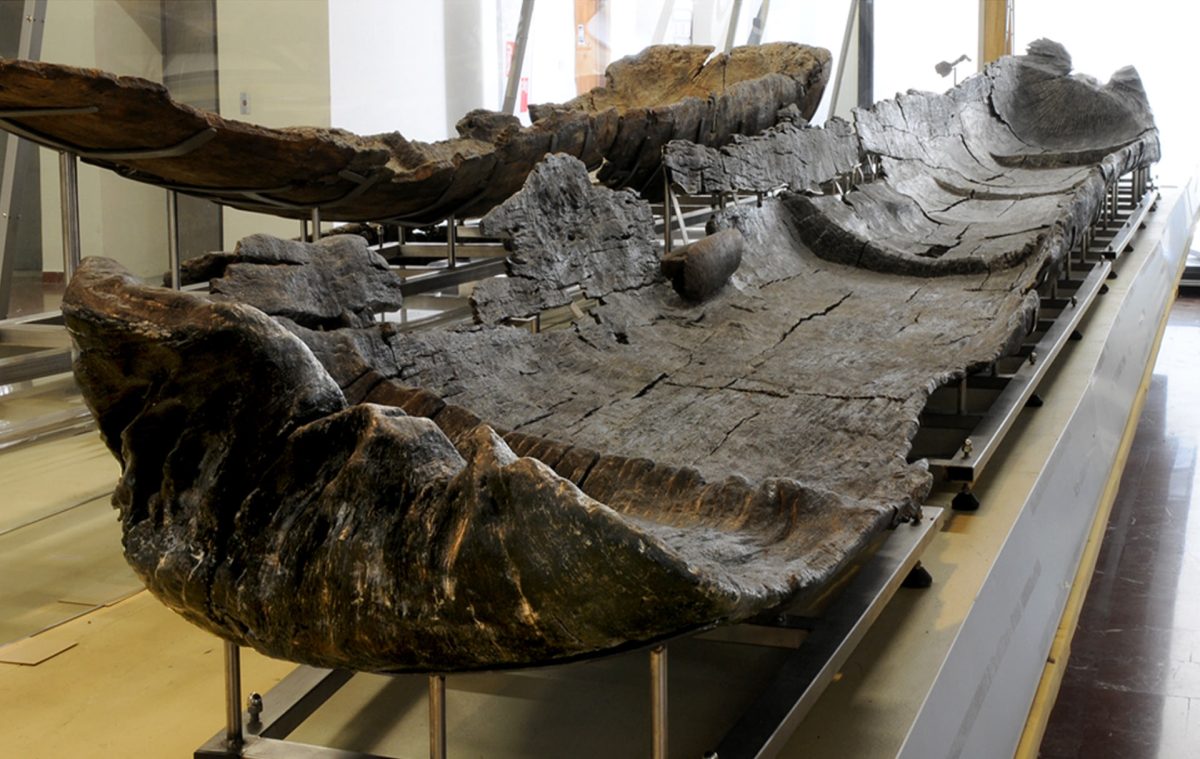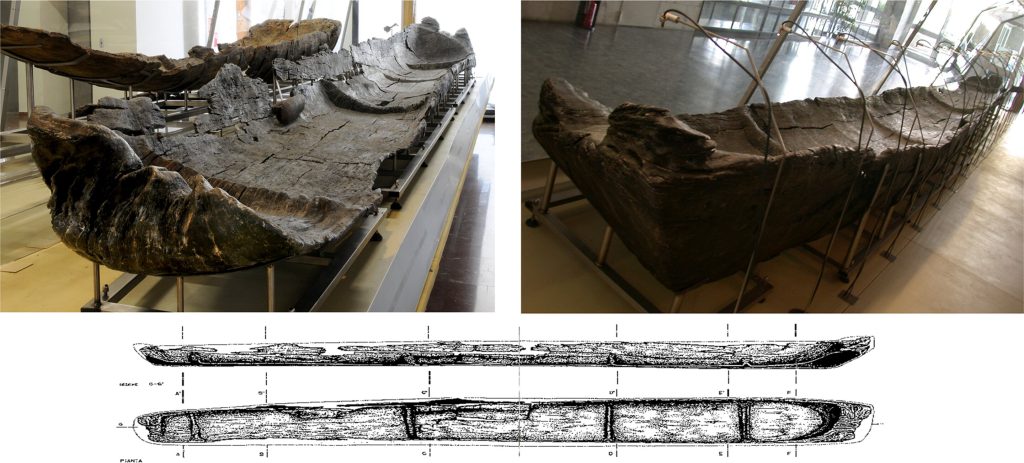
7,000-year-old canoes discovered in Italy show early development of maritime technology in the Mediterranean
A series of canoes estimated to be 7,000 years old have been discovered in the Neolithic (Late Stone Age) lakeshore village of La Marmotta, about 30 km northwest of the Italian capital Rome. These canoes offer new insights into the early development of maritime technology in the Mediterranean.
The canoes date between 5700 BC and 5100 BC and are the oldest in the region.
In research published in the journal PLOS ONE, archaeologists describe the discovery at the Neolithic (Late Stone Age) lakeshore village of La Marmotta, about 30 km northwest of the center of Rome.
The quality and complexity of these prehistoric vessels suggest that several important advances in sailing occurred in the late Stone Age, paving the way for the expansion of the most important civilizations of the ancient world.
📣 Our WhatsApp channel is now LIVE! Stay up-to-date with the latest news and updates, just click here to follow us on WhatsApp and never miss a thing!!
The authors note that the spread of Neolithic culture into Europe took place mainly along the Mediterranean coast.
“Most of the most important civilizations in Europe originated on the shores of the Mediterranean,” they write. “The Phoenicians, Greeks, Romans and Carthaginians used the practically enclosed sea to move rapidly along its coasts and between its islands.”
Neolithic communities occupied the entire Mediterranean between 9,500 and 9,000 years ago, the authors say. They reached the Atlantic coast of Portugal in 5400 BC.
“It is clear that the Mediterranean must have been frequently used for travel, as boats allowed rapid population movements, contacts and the exchange of goods,” the authors write.

It is well known that maritime trade links existed in the Mediterranean during the Neolithic, but until now it was unclear how adept these early sailors were at handling the waves.
Navigating this uncertainty, the authors of a new study analyzed five excavated canoes discovered at a 7,000-year-old site, now at the bottom of an Italian lake.
In this study, Juan F. Gibaja and colleagues provide new insights into the history of maritime technology through the analysis of canoes from the Neolithic lakeshore village of La Marmotta, near Rome, Italy.
Excavations at the site yielded five canoes made of carved wood (dugout canoes) dating between 5700 and 5100 BC. Analysis of these boats reveals that they were constructed from four different types of wood, unusual among similar sites, and incorporated advanced construction techniques such as transverse reinforcement.
One canoe is also associated with three T-shaped wooden objects, each with a series of holes, probably used to secure ropes attached to sails or other nautical elements.
These features, along with previous reconstruction experiments, suggest that these were seaworthy vessels, a conclusion supported by the presence at the site of stone tools linked to nearby islands.
“These canoes are exceptional examples of prehistoric boats, the construction of which required a detailed understanding of structural design and timber features in addition to well-organized dedicated labor,” the researchers said.
Recent maritime technologies and these canoes share similarities, supporting the theory that the early Neolithic saw many important advances in sailing. The authors suggest that there may be more boats preserved near La Marmotta, a potential avenue for future research.
“The direct dating of Neolithic canoes from La Marmotta reveals that they are the oldest in the Mediterranean and provides invaluable insights into Neolithic navigation,” the authors add.
The study is published online in the journal PLoS ONE.
DOI: 10.1371/journal.pone.0299765
Cover Photo: Marmotta 1, a 7,300-year-old canoe on display at the Museo delle Civiltà in Rome. It is a massive dugout canoe made of an oak trunk, about 10.43 m long, 1.15 m wide at the stern and 0.85 m wide at the bow. It is between 65 and 44 cm high, depending on the section of the canoe. Image credit: Gibaja et al, doi: 10.1371/journal.pone.0299765.
You may also like
- A 1700-year-old statue of Pan unearthed during the excavations at Polyeuktos in İstanbul
- The granary was found in the ancient city of Sebaste, founded by the first Roman emperor Augustus
- Donalar Kale Kapı Rock Tomb or Donalar Rock Tomb
- Theater emerges as works continue in ancient city of Perinthos
- Urartian King Argishti’s bronze shield revealed the name of an unknown country
- The religious center of Lycia, the ancient city of Letoon
- Who were the Luwians?
- A new study brings a fresh perspective on the Anatolian origin of the Indo-European languages
- Perhaps the oldest thermal treatment center in the world, which has been in continuous use for 2000 years -Basilica Therma Roman Bath or King’s Daughter-
- The largest synagogue of the ancient world, located in the ancient city of Sardis, is being restored











Leave a Reply